

Today we’d like to introduce you to Thad Oviatt.
Hi Thad, it’s an honor to have you on the platform. Thanks for taking the time to share your story with us – to start maybe you can share some of your backstory with our readers?
The idea for Parkent started in college when a friend had two $1,000 road bicycles stolen in one week. The thieves left a sticky note with a smiley face and “THANKS” written on it. My friend asked if I could combine a bicycle lock, rack, and computer to prevent theft. Doing research, I discovered the one virtual point all bicycles have in common.
Based on this I created a proof-of-concept smart bicycle rack. It went on to pay for my two master’s degrees. After college and working in corporate America, I started Parkent in 2013. Over the next several years, I developed and patented the smart bicycle rack. Bicycle riders loved the smart bicycle rack, but business owners just saw it as an expensive bicycle rack.
After going through two accelerator programs, Flashpoint/Georgia Tech and The FARM | Boomtown, it was realized Parkent needed a pivot. From 2018-2020 the electric bicycle market exploded. Seeing the need for a secure electric bicycle charging station, Parkent pivoted to by adding in electric charging components into the smart bicycle rack.
In 2021 the electric bicycle market grew to outpace the rest of the electric vehicle market. Last year there were 200,000 more electric bicycles imported than every other electric vehicle combined.
Now Parkent makes the world’s first universal secure electric bicycle charging stations. The station can safely park and charge any electric bicycle on the market including trikes, cargo bikes, and pedicabs. Parkent debuted the station at the Consumer Electronics Show in Las Vegas in January and has had a soft-launched station running outside for the past year at Atlanta Tech Village. Parkent now has station manufacturing in Suwanee and assembly in Woodstock, Georgia. Today we are in talks with car charging companies, universities, and cities for future deployment of stations.
Can you talk to us a bit about the challenges and lessons you’ve learned along the way. Looking back would you say it’s been easy or smooth in retrospect?
The road has been the opposite of smooth.
First, starting back in college, I had no idea there is no standardized bicycle frame. It took me three months to realize the market is full of custom-made bicycle frames. It took me another three months to find the virtual point all bicycle frames have in common as my building start point. Then there was building the proof-of-concept. Thankfully there were enough people around willing to help with resources and minor welding.
Starting Parkent as a business, I had to find people who worked with metal since I am a computer/electrical guy. Through resources like the Advanced Technology Development Center (ATDC), I was able to find out about Georgia Tech Capstone. Capstone will build your project with five senior engineers for a reasonable fee. Thankfully ten engineers signed up for the project, so I was able to do some A/B product manufacturing and testing.
I then found out about the State of Georgia’s Manufacturing Extension Partnership (GaMEP) program. I was able to get a commercial prototype CAD designed for a reasonable fee. Finally, after a referral I found a local manufacturer willing to make a one-off prototype of the “smart bike rack”.
During the two accelerator programs, while pivoting to a charging station, I had to research lithium-ion battery technology. I then had to find a way to build in a power bank and charging apparatus to physically fit into the system. This charging system had to be able to service the entire electric bicycle market. It was then I found out the new market was even more custom-made than the bicycle market with every manufacturer having their own way to charge batteries. Electric bicycles have almost 20 different plug connectors between a standard wall outlet and the battery connection. I solved this by having two standard outlets mounted on the station with a 2.7 kWh backup battery system.
Other struggles were the one-off manufacturer got too busy to work on small projects, so a new manufacturer needed to be found. Thankfully a new one was found in the local area without having to go overseas. Unfortunately, they only did batch manufacturing. Then I had to find an assembly warehouse to store the station parts. Working to develop a phone app to link with the station led down multiple costly dead ends until the right programmer was found.
A consistent struggle has been working capital. My competition has all had large seed investments allowing them to move faster. I have had to work with what is best available for the lowest cost. I started Parkent with almost nothing in the bank. Thankfully a small capital infusion from my grandmother was able to pay for patenting and early station development. The accelerators helped with small investments to get past the next steps of pivoting to a charging station. Recently some grant money helped with debuting the station at the Consumer Electronics Show in Las Vegas last January. It is also helping with upgrading the station communication from Bluetooth to cellular connectivity.
As you know, we’re big fans of Parkent. For our readers who might not be as familiar what can you tell them about the brand?
Parkent builds the world’s first universal secure electric bicycle charging stations. They can safely park and charge any electric bicycle on the market including all variations. Parkent works to achieve lower CO2 levels by promoting electric bicycle riding which is the lowest CO2 producing mode of transportation per kilometer traveled. Electric bicycle riders will now have a safe destination whether they be going to the local store, commuting to work, or just riding around town. Because there was 200,000 more electric bicycles imported into the United States last year over every other electric vehicle combined there is a need for safe public charging locations. The setup of these charging stations is easy, does not require infrastructure remodeling and can be powered off solar energy. A system of stations can even form a microgrid and possibly supply emergency power as a virtual power plant in case of large blackouts.
We’re always looking for the lessons that can be learned in any situation, including tragic ones like the Covid-19 crisis. Are there any lessons you’ve learned that you can share?
During the Covid-19 Crisis, the electric bicycle industry exploded with more and more people looking to get out of their homes in a safe way. The need for alternative transportation became very apparent. The severe lack of infrastructure to support electric bicycles and other emerging light electric vehicles became even more apparent. Since the crisis, the sales in electric bicycles has continued to grow at a rapid pace. Very soon, there will be more electric bicycles on the road than electric cars.
Pricing:
- $9,600.00 for one station. *plus extra for installation
- $50,000 for 6 station system. *plus extra for installation
- $90,000 for Solar powered 6 station system. *plus extra for installation
- $1.00 per day or $30 per month for electric bicycle riders to use any station.
Contact Info:
- Website: https://www.parkentcycles.com/
- Instagram: https://www.instagram.com/parkentcycles
- Facebook: https://www.facebook.com/parkentcycles
- Twitter: https://twitter.com/ParkENTCycles
- Youtube: https://www.youtube.com/channel/UCvyxIuDBN9SktBKotVb0cew
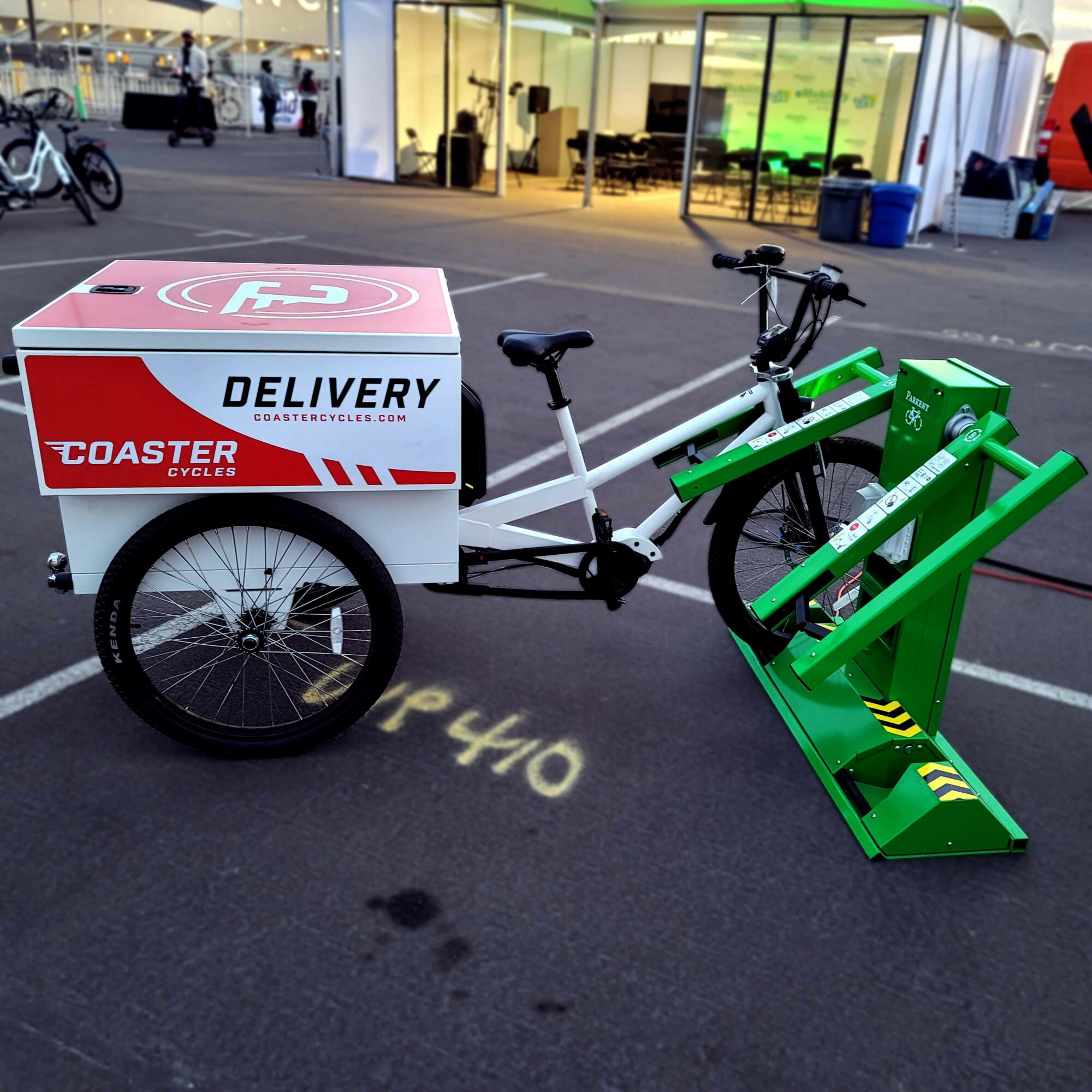
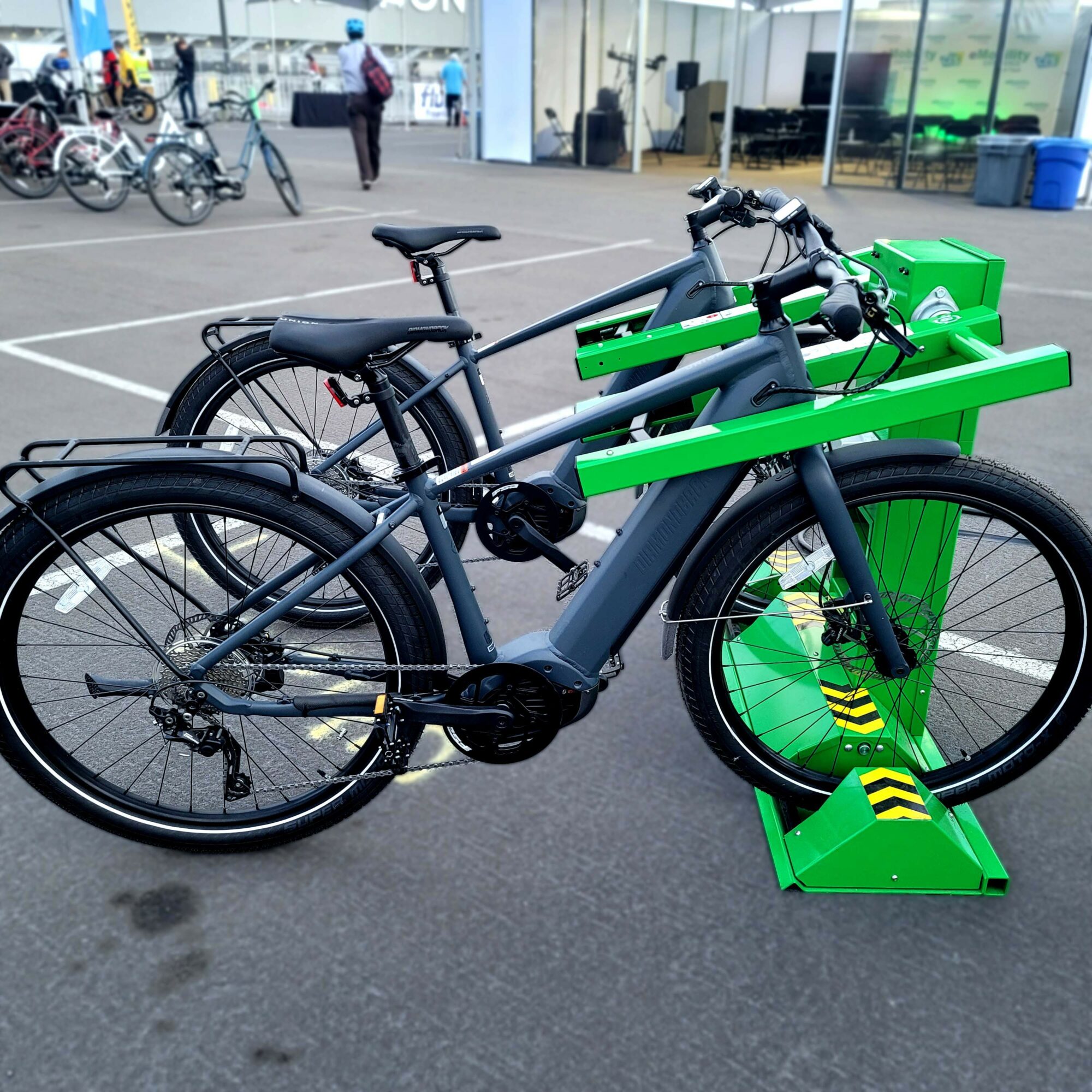
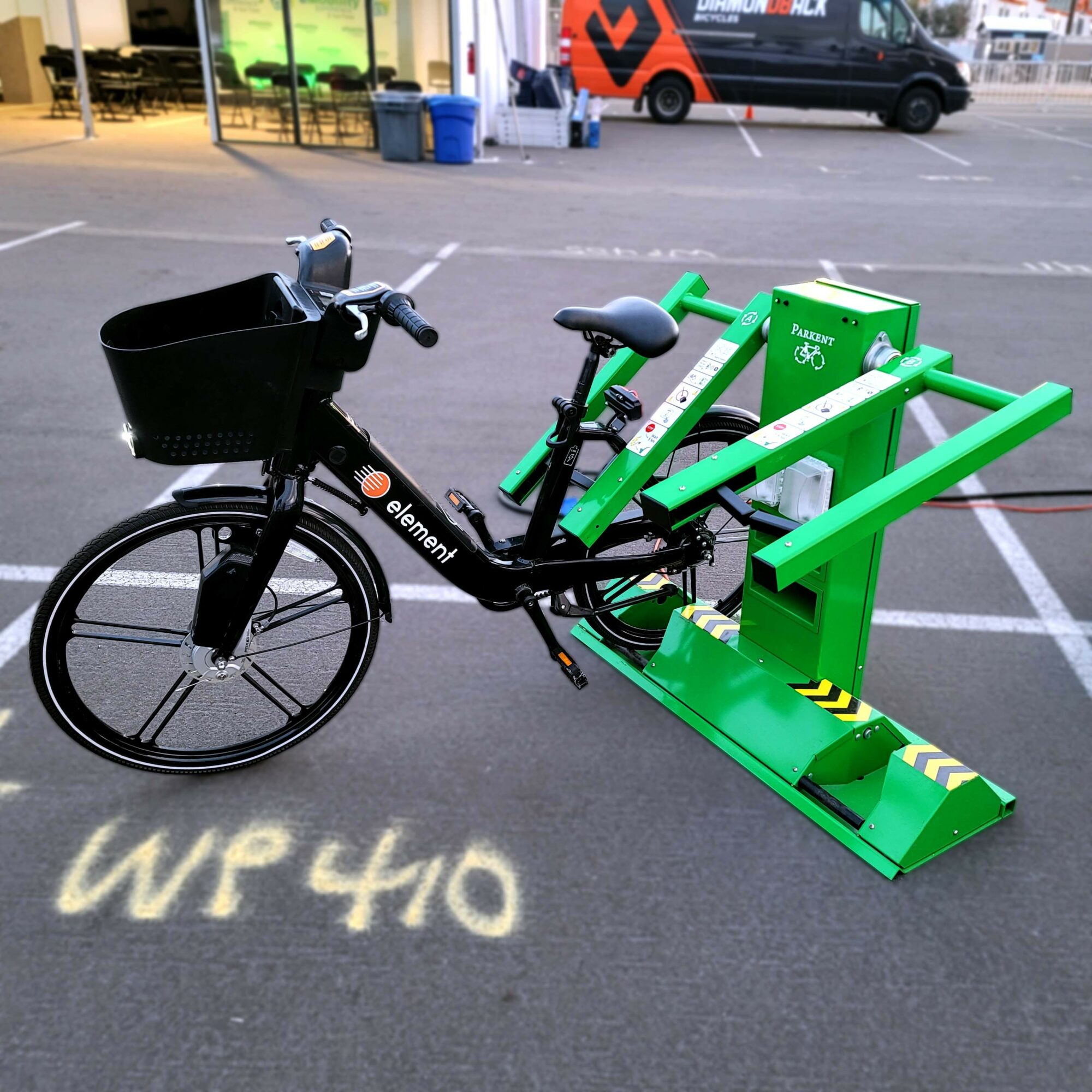
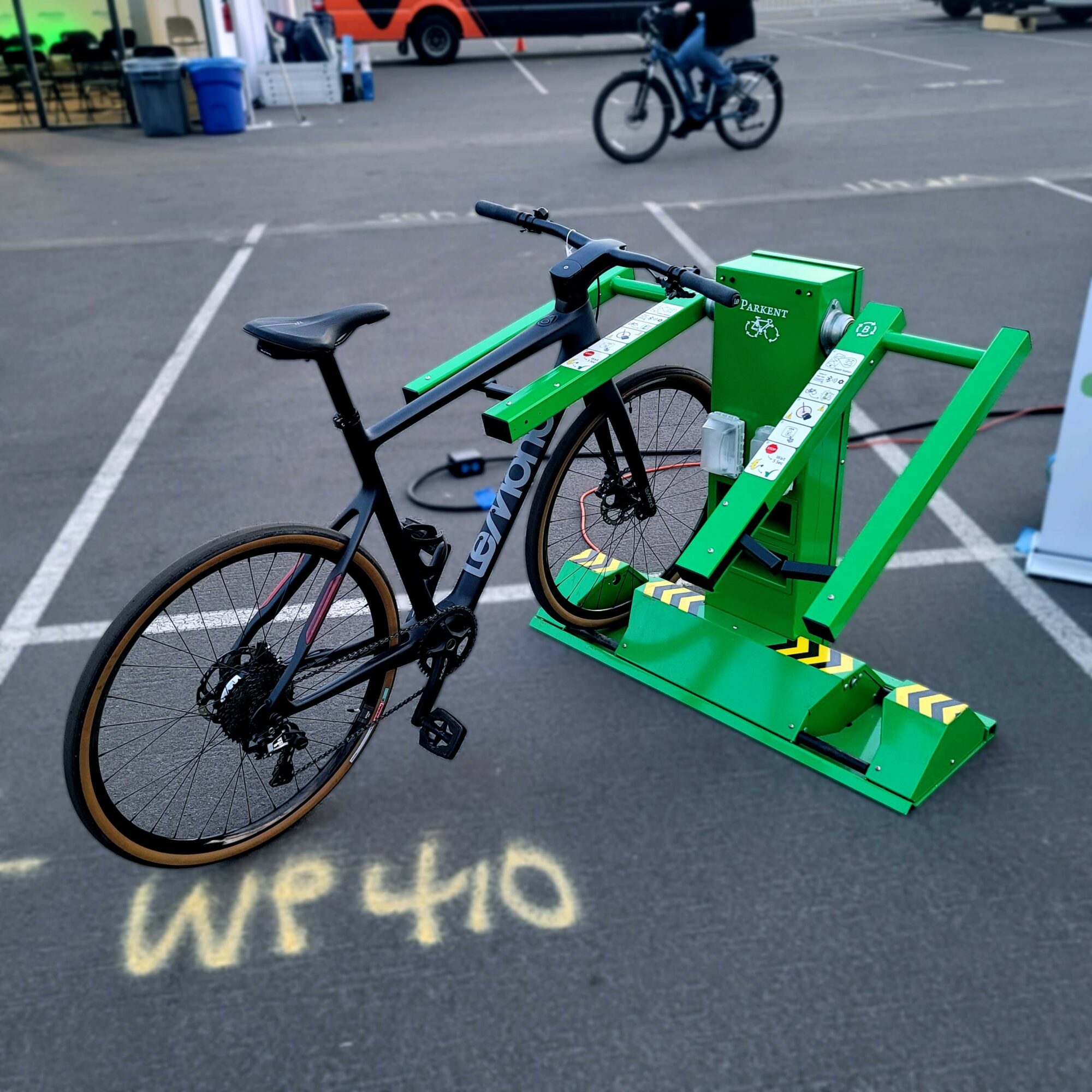
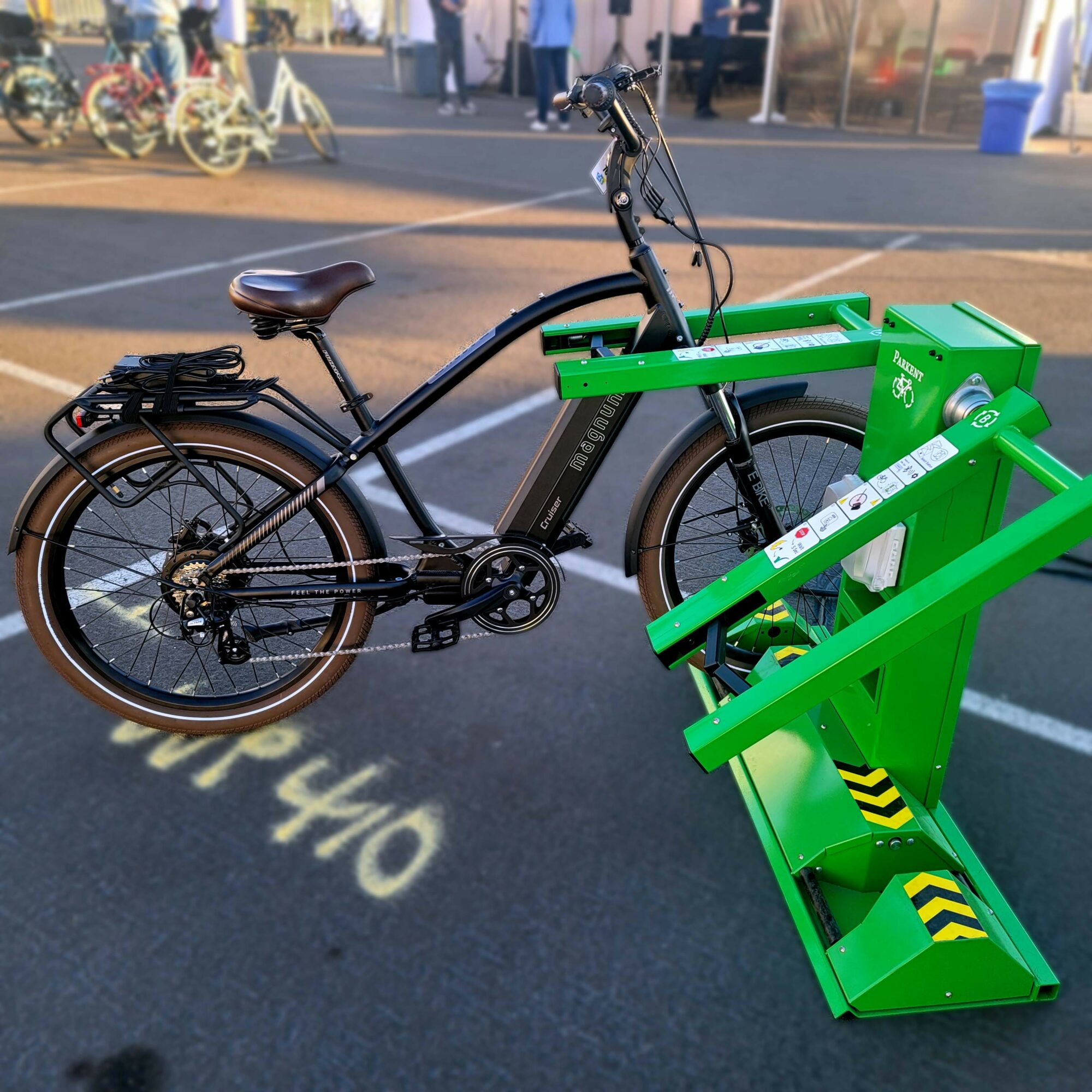
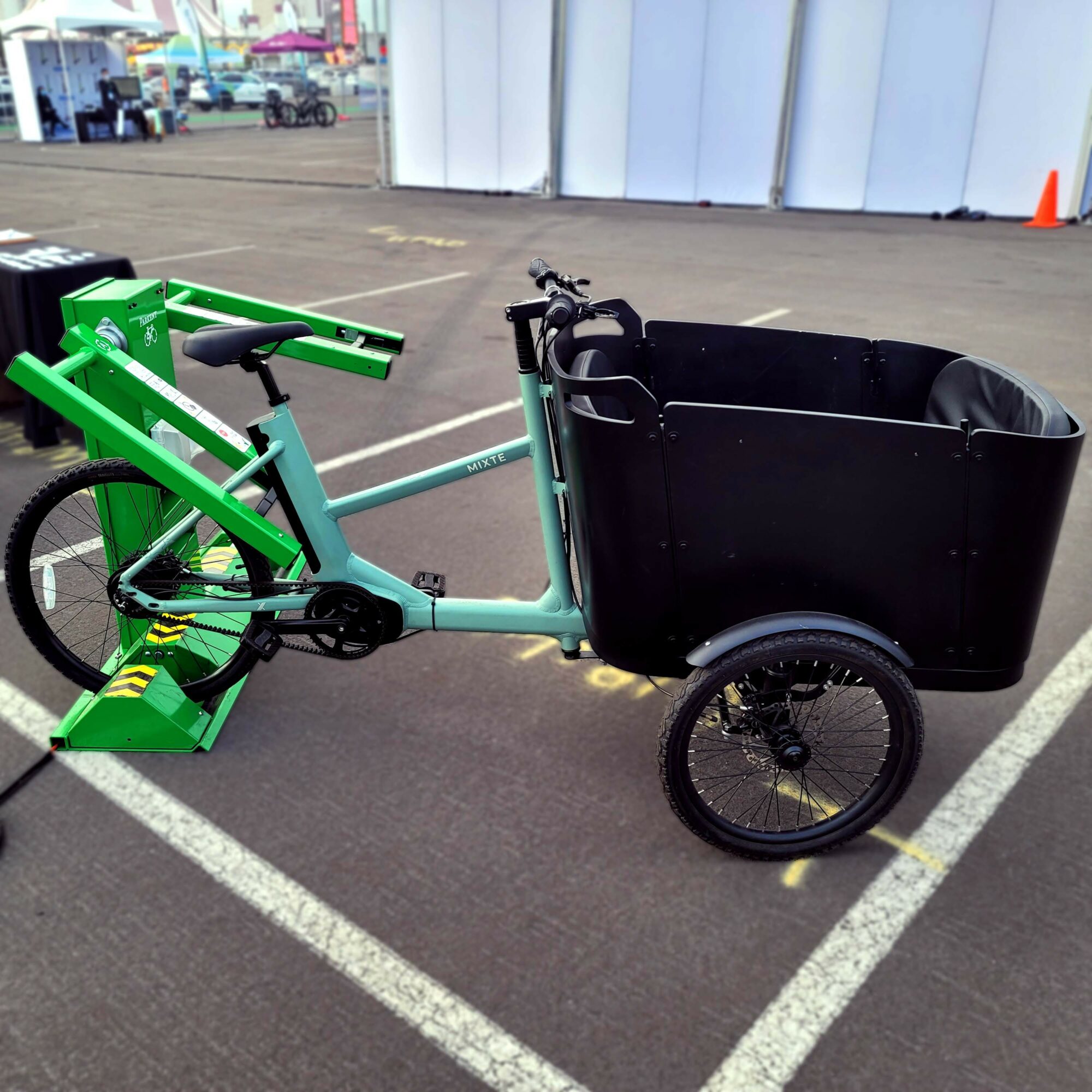
Image Credits
Thank you to Alessandra Shahan for taking the pictures. Also thank you to the eMobility Experience for inviting Parkent to exhibit at the Consumer Electronics Show in Las Vegas last January.













